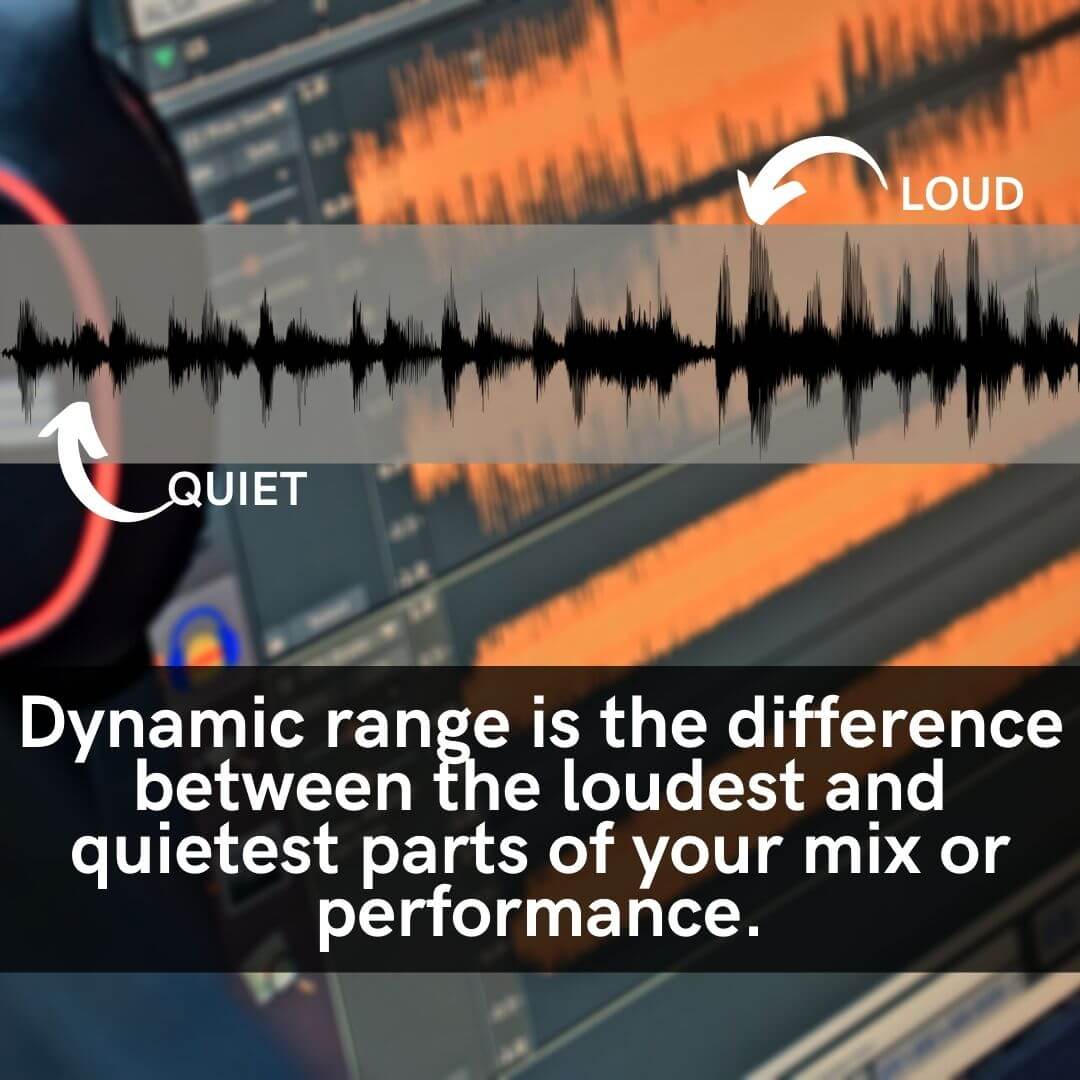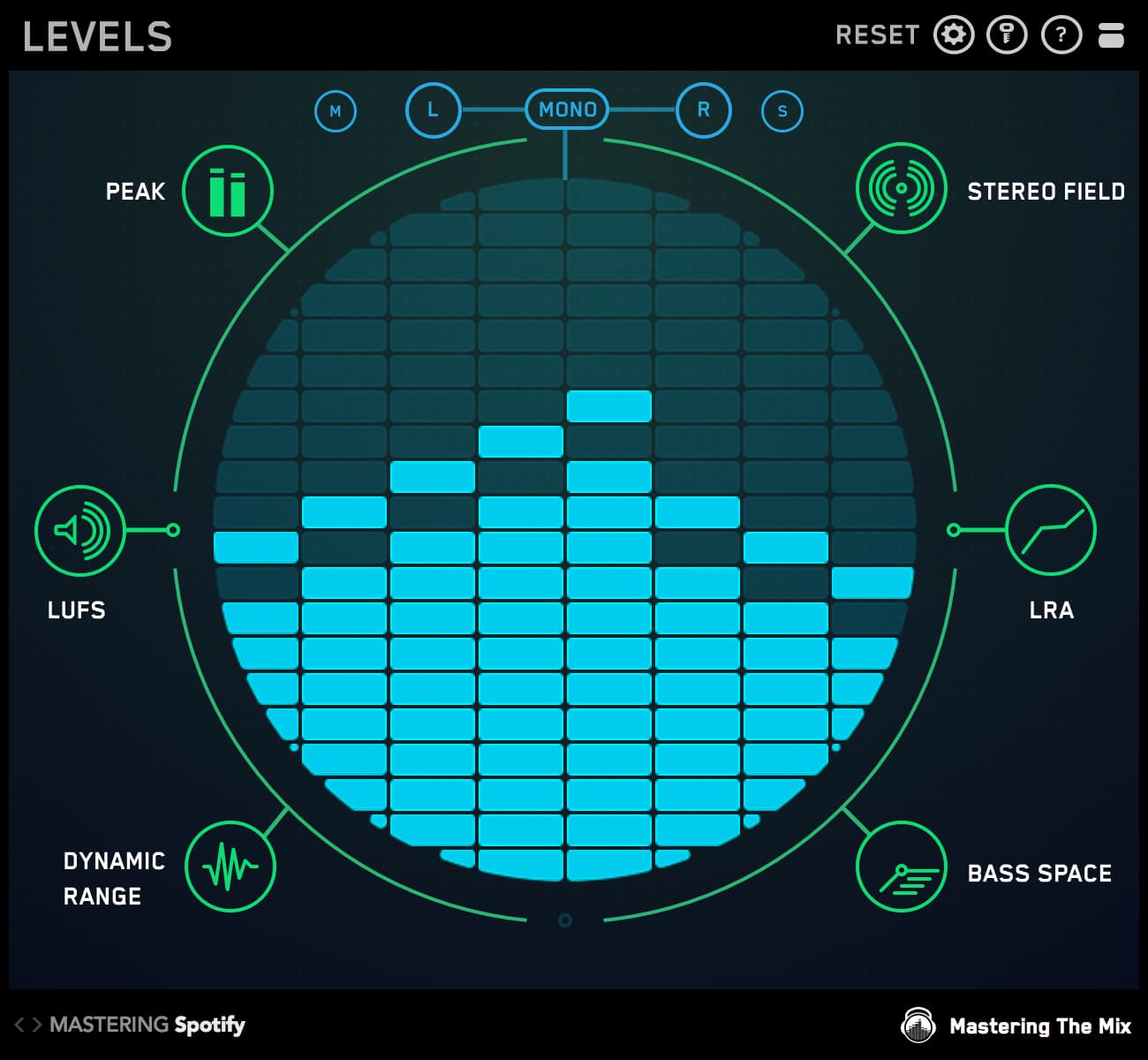Ask any great musician—it’s not just the notes you play, it’s how you play them. Dynamics bring emotion, energy, and excitement to music. They shape the listener’s experience and can transform a flat mix into something alive and immersive.
From classical composers marking piano and forte on sheet music to modern producers fine-tuning transients with surgical precision, dynamics have always been a defining force in music.
In this post, we’ll explore what dynamics really are, how to measure and shape them in your mix, and how to find the perfect balance between clarity, punch, and loudness.

What Are Dynamics in Music and Mixing?
First, let's start by answering the question, "What are dynamics?"
The term ‘dynamic range’ can mean a few different things in mixing, which is why it’s often misunderstood. It can refer to how transient and punchy the audio is or the overall dynamic journey the song takes as it progresses from verse to chorus.
The word ‘dynamics’ can also be used to describe the differences in volume between each note in a performance. The concept is simple: notes played softly sound different than notes played with greater force. Generally speaking, loud notes tend to have a more pronounced attack, longer sustain, and fuller frequency response, while quiet notes are shorter and softer.
The ‘dynamic range’ of a track is one tool we use to determine the perceived punchiness of audio.
Unlike peak levels, which measures the maximum volume of audio, the dynamic range considers both the loudest and quietest parts of the mix to determine how transient and punchy the mix is.
This can also help us understand not just the maximum peak volume of a track but the average perceived volume, which can vary greatly. For instance, a heavily compressed song that peaks at -0.5dB will sound louder than an uncompressed song that clips at -0.1dB.

How to Measure Loudness and Loudness Range (LU)
In order to determine the dynamic range of a track, we need to measure the intensity of the loudest and quietest parts.
We use Loudness Units (LU) to measure the statistical differences in loudness of a recording. Loudness Units is a long-term reading that helps demonstrate the difference in volume between different sections of your song, such as verse, chorus and bridge.
Our mixing and metering plugin LEVELS makes it easy to monitor your LU levels with the Loudness Range tab, which shows the statistical measure of loudness variation for your entire track.
If there is a big difference in loudness between the various sections of your track, then your loudness range will be a higher number - probably somewhere around 10.
If there isn't much variation in the loudness of the various sections of your track, the loudness range will be a small number - probably around 3 LU. If your track has a loudness range of less than 3LU for more than 30 seconds, the Loudness Range icon in LEVELS will turn red.
Unlike peak meters, which can show when a track is clipping (something that most engineers agree sounds bad), Loudness Range is subjective. For most tracks, a Loudness Range above 5 LU is ideal for creating noticeable dynamics that add to the tension and release of the track.
However, some genres (like Hip Hop and House) typically use a louder, more in-your-face production style that lends itself to a lower loudness range. For a full list of the average Loudness Ranges for common genres, check out our blog on measuring loudness with LEVELS.

What Is Dynamic Range in Mixing?
Now that you understand how to measure the Loudness of a track, let's talk about how to use that information to determine the short-term Dynamic Range (punch) of a track.
Dynamic Range is the ratio of the ‘short-term LUFS’ to ‘peak level’ of a given track. It's essentially a measurement of the difference between the quietest and loudest parts of your track.
Remember, LUFS tells you the average volume level over a short period of time, while the peak level shows the highest volume level your track achieves, effectively measuring the baseline volume against the maximum volume.
A high number means your track is very dynamic, while a low number means your track is not very dynamic.
If your track has a high dynamic range, it means that there is a big difference between the quietest and loudest parts of your track. This can lead to a mix full of life, excitement and groove.
If your track has a low dynamic range, it means that all of the parts are playing back at more or less the same level, which isn't very exciting.
With LEVELS, you can quickly check the Dynamic Range of your track using the Dynamic Range tab to help you determine if your track is dynamic enough.
Start by selecting a preset, each of which is optimized for suggested playback levels on different mediums, including CDs, club sound systems and streaming services like Soundcloud, Spotify and YouTube. If you're not sure which system you want to optimize your mix for, just select one of the loudness-based presets.
After selecting a preset, the meter will turn red when your music exceeds the suggested dynamic range for the platform. This is most likely caused by over-compressing or limiting your tracks.

Remember; dynamic range is not relative to the loudness of your music. If your music is over-compressed, the meter will turn red regardless of how loud or quiet the track is. Now that we've identified the problem, let's talk about how to fix it.
How to Increase Dynamic Range Without Losing Punch
Not only does too much compression suck the life out of your mix, it also reduces the clarity and punch of your transients, making your song feel weak and dull.
For a more dynamic mix, check the compressors and limiters in your session to make sure you're not over-compressing your tracks. Try to use a soft ratio like 4:1 or lower, along with slow attack times and fast release times for a more natural sound. Click here for the secret to perfect attack and release times when compressing music.
Fast attack times can exaggerate the compression effect and cause an unnatural pumping sound. Similarly, slow release times can cause notable volume changes throughout your mix.
Try not to make your compressors work too hard, either. I like to apply 3-6 dB of compression per plug-in. If you feel that a track still needs more compression, you can add a second plug-in and use serial compression for a more subtle effect.
Alternatively, try using parallel processing. To accomplish this, send the desired track or bus to a new aux channel and load up your favorite, most aggressive compressor. Instead of going for a subtle sound, peg the needle with high ratios and fast attack and release times. Then, blend the over-compressed signal together with the original for a unique and exciting sound.

If you still feel that your mix isn't loud enough in some sections, use automation to increase volume levels where needed. Simply boosting the overall level of the chorus can add a big lift to your track when it needs it the most. Similarly, dropping the level for the verses or breakdown can help bring the listener in for a more intimate sound.
Remember, mastering will also lower the dynamic range of your track, so it's important to make sure your mix sounds dynamic before moving on to mastering.
If you're working with printed tracks that are over-compressed, it can be tricky to add dynamics back, but not impossible. With a dynamic transient enhancer like PUNCH in our plugin ANIMATE, you can instantly breathe new life into squashed mixes.
Just insert ANIMATE on an over-compressed track, increase the amount slider and reduce the threshold so that just the transients are being affected. This helps bring out your transients and restore separation between the loudest and softest moments—instantly improving your dynamic range.
Now that you understand the technical process of increasing the dynamic range of music, let's talk about how you should approach this process while mixing. After all, just because you have a hammer doesn't mean you know how to build anything with it.

Loudness vs. Dynamics: How to Find the Right Balance
Mixing is all about balance. Left and right. High and low. Tension and release. But when it comes to loudness, you have to compromise because you can't have a super-loud mix and a dynamic mix. You have to find the right balance for your song.
In order to make a mix louder, you need to compress it, which reduces the dynamic range.
Think of it this way: if most professional mixes have a maximum peak value of -0.1dB, what makes one mix louder than the other? It's not the maximum peak value that defines loudness—it's how close you stay to the maximum peak value for the duration of the song, or the dynamic range of the mix.
Since we know that most tracks peak around -0.1dB, we should instead look at the quietest part of the mix to determine the dynamic range. Oftentimes, whichever track has a higher minimum peak value will sound louder.
However, louder is not always better. Just ask Metallica.
In 2008, Metallica set out to create the loudest album that had ever been made, Death Magnetic. In order to accomplish this, they had to compress the tracks so hard it actually caused audible distortion. The album was widely panned for its aggressive production style, and is often cited as the last straw in the Loudness War.

After the release of Death Magnetic, many music industry professionals began to agree that mastering records as loud as possible was affecting the quality of the music. In the years that followed, engineers began delivering more dynamic mixes with less compression, and much to the surprise of record executives and radio professionals, it didn't negatively affect sales.

However, overly dynamic music has its drawbacks too. Think about the last time you watched a movie on cable TV. You have to crank the volume in order to hear all of the quiet dialogue, which makes the loud action scenes overpowering.
The same can be said for your music. If music is too dynamic, it can be difficult to hear everything clearly, especially in situations where you can't adjust the volume, like in a club or on your office radio. It can also be jarring for the listener to hear a big increase in volume out of nowhere.
So, instead of mixing for maximum loudness or dynamics, try to find a compromise between the two. For most tracks, it's best to shoot for a Loudness Range of -4 to -8 LU and a Dynamic Range above 6DR. This ensures that your mix will be loud enough to hear clearly on any system and dynamic enough to prevent unwanted audio distortion.
However, these ranges can vary depending on the genre. For more information on the recommended target levels for different genres and playback systems, check out our blog on Mixing with LEVELS.

Conclusion
At the end of the day, mixing is a balancing act—and nowhere is that truer than when it comes to dynamics. A mix that’s too compressed sounds lifeless; a mix that’s too dynamic can be jarring or unclear.
The sweet spot lies in preserving the musicality and energy of your track while keeping it loud enough to compete.
Use tools like LEVELS and ANIMATE to monitor and enhance your mix’s dynamics, and always trust your ears. Whether you’re mixing pop, rock, house, or hip hop, a well-balanced dynamic range can elevate your mix from good to unforgettable.










